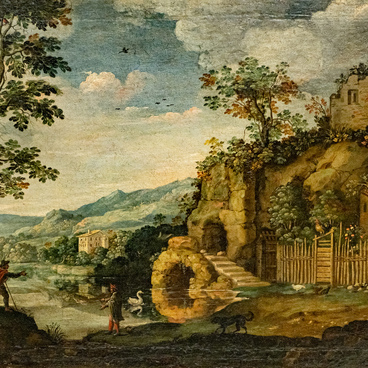The painting “Saint Jerome” by an unknown master, featured in the collection of the Sakha Republic National Art Museum, can be attributed to a trend in painting that follows the principles of depiction as established by Caravaggio and his disciples and followers.
The painting is created in an energetic Baroque manner, which allows the experts to attribute it to the 17th century. A large figure occupying almost the entire space of the canvas, irrational lighting, contrasting chiaroscuro, emotional expressiveness — all this resembles Caravaggio’s techniques. The painting is distinguished by its particular dramatic intensity. It captures the moment when St. Jerome, while in the desert, heard the trumpet of the Day of Judgment. According to Christian doctrine, the sound of the Archangel’s trumpet announced the last judgment on all mankind and the resurrection of the dead during the Second Coming of Christ to earth.
The saint is depicted as a powerful elder with a stern face. The light falls on Jerome’s naked torso and face, drawing the viewer’s attention to his eyes raised to God. The color palette of the painting is dominated by three tones: dark brown in the background, the flesh ochre color of the illuminated figure of Hieronymus and the black toga of the saint, which slips from his shoulders. The artist uses a limited palette of colors, thereby emphasizing the seriousness of what is happening. Through the image of St. Jerome, the artist reminds the viewer of the need to be prepared for death and the Last Judgment.
In the middle of the 17th century, a special trend of realism emerged in Neapolitan painting, largely due to the works of Jose de Ribera, a Spanish Caravaggist, painter and printmaker. As a court painter of the Spanish viceroys in Naples, Ribera created paintings based on mythological and biblical subjects, and he especially succeeded in scenes from the lives of saints. All the artist’s work was permeated with a religious feeling. Ribera had a lot of followers.
The creator of the painting presented in the
exhibition may have worked in Naples and was well acquainted with the work of
the Spaniard Jusepe de Ribera, who was a follower of Caravaggio, lived in this
city and repeatedly painted artworks dedicated to Jerome. The influence of
Jusepe de Ribera is felt in the very plot and restrained coloring of the
painting.


